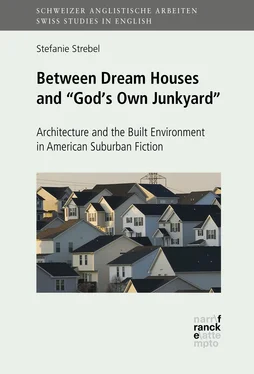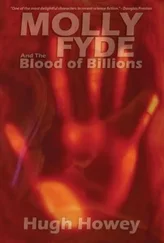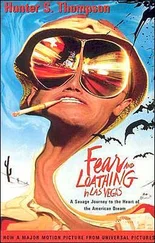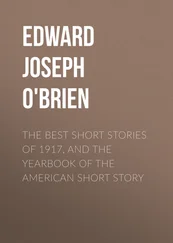As for Babbitt, the historical value and architectural condition of the Eathorne Mansion are awe-inspiring to him. He realises that his present self and his present life situation are insufficient, and that he must aspire to something higher and become more rigorous, cold and powerful. Through being granted access to the Eathorne Mansion, with its European sense of aristocratic architecture and design, Babbitt is reassured in his endeavour. He adorns himself with the architectural symbolism of the mansion, and he lets the architecture enhance him and transform him into the person he is actively striving to become.
In terms of architectural influence, the same holds true when Babbitt denounces and rebels against his life as a middle-class suburban husband. By switching locations and spending time in the bohemian abode of his mistress Tanis Judique, he more and more transforms into a socialist, fighting social conventions. From the point of view of his former self, there is a social as well as a geographical and architectural downward movement as he sneaks “from Floral Heights down to the Bunch” (342, my emphasis). However, upon realising that the “Bunch’s” social rebellion is similarly pathetic and desperate as his own, Babbitt sneaks back up into the security and conformity of Floral Heights. He returns to conventional suburbia geographically, socially and ideologically speaking, feeling as though he were “swinging from bleak uplands down into the rich warm air of a valley pleasant with cottages” (389). The idyllic image of a valley with cottages, as well as the transition from bleakness to warmth, underlines his newfound or (temporarily) re-found appreciation of the suburban standard, even though this standard is likely to exert its influence and turn him back into his old conventional self.
Babbitt therefore returns to where the story began; his attempted escape from the mediocrity and monotony that is American suburbia was a failure, and he returns to safety and conformity without much resistance. Floral Heights and all it represents has its firm grip on him, and, it seems, it is too late for him to make significant changes in his life and escape standardisation. Despite the fact that the novel suggests that not all standardisation is inherently negative, Lewis’ criticism outweighs the positive aspects of this process in the end. Even though in the case of the built environment and commodities, standardisation enables people to recognise themselves in other places, and to identify with others, it fails to give them the opportunity to express themselves individually, and it makes them disappear in the masses. It turns them into blind sheep mechanically aspiring to a dictated material standard and mechanically following the prevailing ideology. Furthermore, the analysis of the relation between the built environment and the individual in Babbitt – encompassing architecture, urban planning, landscape architecture and interior design – demonstrates how much these realms reinforce and intersect one another, and that they are in a continuous dialogic relationship. The individual rises and falls not only with its social but also with its architectural environment, and the architectural environment rises and falls with it. Architecture and design are much more than a representation of culture, as they are themselves capable of shaping those who engage with them.
The 1920s – a decade of unprecedented economic prosperity in the United States – were a time when the American citizen was moulded through design and material possessions more than ever before. Babbitt is certainly the most iconic novel of the Jazz Age when it comes to materialism and consumerism within the context of mass culture in America. However, F. Scott Fitzgerald’s The Great Gatsby continues this dialogue in many respects. While both the setting and social background of the novel differ, and while it is certainly far from being a satire on the conformity encountered in American culture, Fitzgerald develops further some of the same cultural issues criticised in Babbitt , and their repercussions on the (fictional) built environment are equally pronounced.
Конец ознакомительного фрагмента.
Текст предоставлен ООО «ЛитРес».
Прочитайте эту книгу целиком, купив полную легальную версию на ЛитРес.
Безопасно оплатить книгу можно банковской картой Visa, MasterCard, Maestro, со счета мобильного телефона, с платежного терминала, в салоне МТС или Связной, через PayPal, WebMoney, Яндекс.Деньги, QIWI Кошелек, бонусными картами или другим удобным Вам способом.











